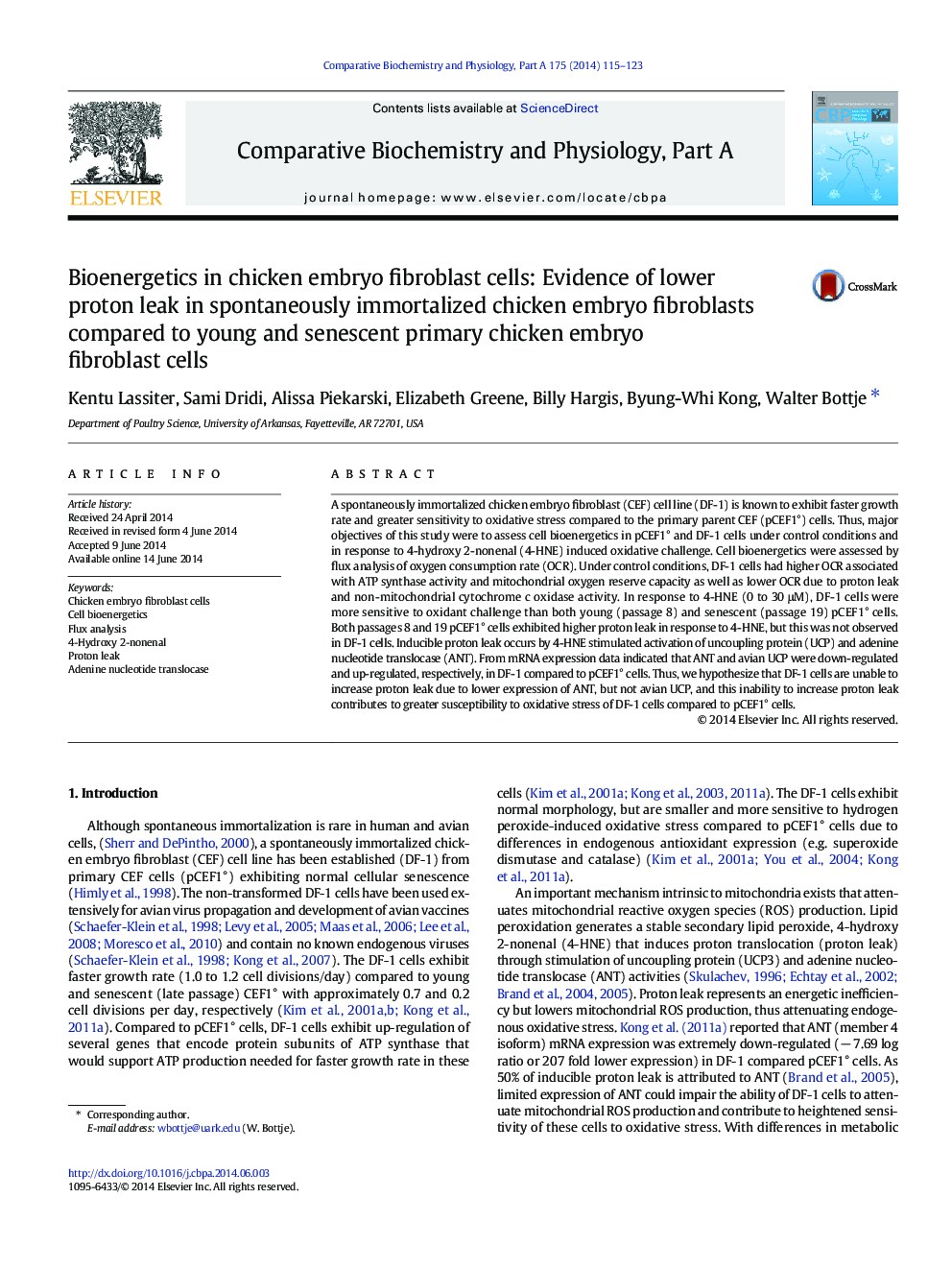| Article ID | Journal | Published Year | Pages | File Type |
|---|---|---|---|---|
| 8318633 | Comparative Biochemistry and Physiology Part A: Molecular & Integrative Physiology | 2014 | 9 Pages |
Abstract
A spontaneously immortalized chicken embryo fibroblast (CEF) cell line (DF-1) is known to exhibit faster growth rate and greater sensitivity to oxidative stress compared to the primary parent CEF (pCEF1°) cells. Thus, major objectives of this study were to assess cell bioenergetics in pCEF1° and DF-1 cells under control conditions and in response to 4-hydroxy 2-nonenal (4-HNE) induced oxidative challenge. Cell bioenergetics were assessed by flux analysis of oxygen consumption rate (OCR). Under control conditions, DF-1 cells had higher OCR associated with ATP synthase activity and mitochondrial oxygen reserve capacity as well as lower OCR due to proton leak and non-mitochondrial cytochrome c oxidase activity. In response to 4-HNE (0 to 30 μM), DF-1 cells were more sensitive to oxidant challenge than both young (passage 8) and senescent (passage 19) pCEF1° cells. Both passages 8 and 19 pCEF1° cells exhibited higher proton leak in response to 4-HNE, but this was not observed in DF-1 cells. Inducible proton leak occurs by 4-HNE stimulated activation of uncoupling protein (UCP) and adenine nucleotide translocase (ANT). From mRNA expression data indicated that ANT and avian UCP were down-regulated and up-regulated, respectively, in DF-1 compared to pCEF1° cells. Thus, we hypothesize that DF-1 cells are unable to increase proton leak due to lower expression of ANT, but not avian UCP, and this inability to increase proton leak contributes to greater susceptibility to oxidative stress of DF-1 cells compared to pCEF1° cells.
Related Topics
Life Sciences
Biochemistry, Genetics and Molecular Biology
Biochemistry
Authors
Kentu Lassiter, Sami Dridi, Alissa Piekarski, Elizabeth Greene, Billy Hargis, Byung-Whi Kong, Walter Bottje,
